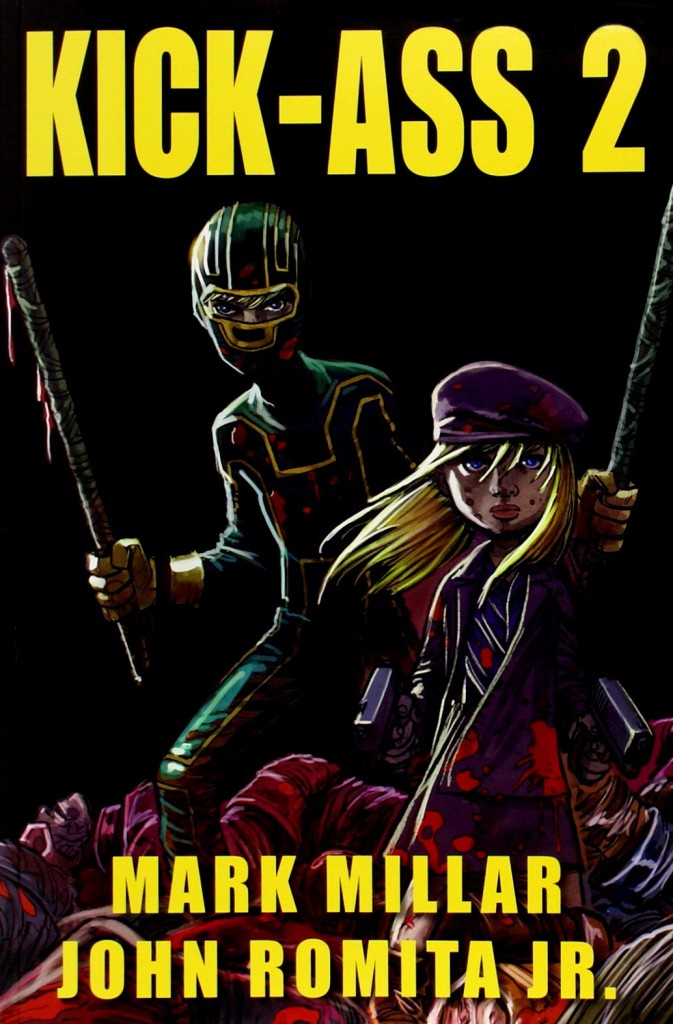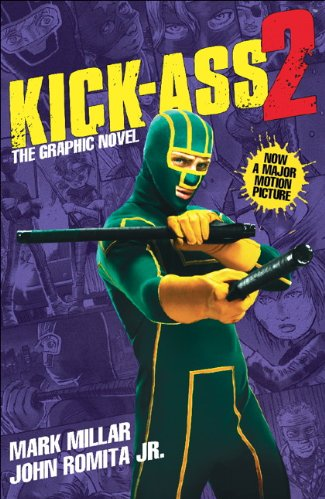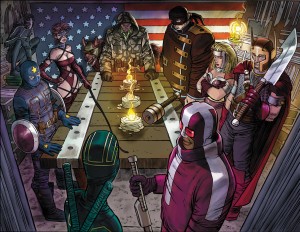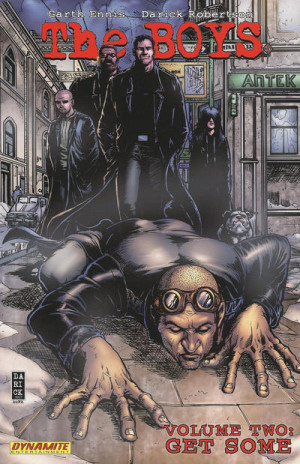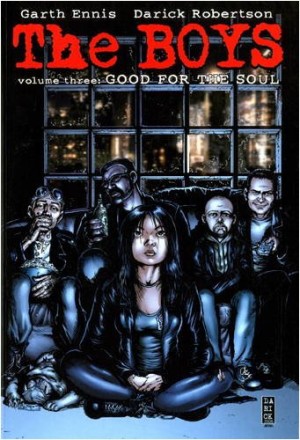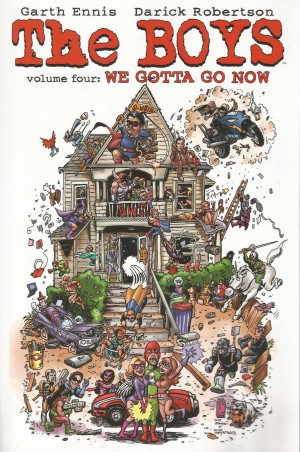Review by Frank Plowright
Spoilers in review
The second Kick-Ass movie was a disappointing case of diminished returns, and there’s an element of that about the second graphic novel as well, although nowhere near the same degree.
Mark Miller uses the same opening technique as previously, beginning with a few pages displaying that all has not gone well for Dave Lizewski, who again provides the narrative in hindsight. He’s now being trained by Hit-Girl, a sort of potty-mouthed Yoda, passing on combat techniques learned from her father. He also discovers he’s been an inspiration, not only to teens, but to adults, and it’s with a group of these that he allies himself. They exude confidence and capability, are organised enough to do some good, yet are also amusingly depicted as people with problems of their own.
The first book was characterised by much swearing and buckets of blood, but the repetition here has a faked quality, as if stemming from a desire to breach boundaries of good taste rather than essential to a story. This feeds into the book’s most problematical sequence. We’re presented with a villain calling himself the Motherfucker, with a personal grudge against Dave, and his methods of revenge include the gang rape of the girl Dave loves. This, at least, occurs off panel, so isn’t as graphically portrayed as the violence, but it’s compounded by an earlier joke about Rihanna being beaten up by her boyfriend (an already dated cultural reference). It’s far from the Motherfucker’s only appalling transgression, but as with other elements it’s gratuitous, not integral, and so extremely ill-judged. The juvenilia is carried through to film director Joe Carnahan’s puerile introduction, in which he attempts to top Millar’s shock bombs.
Leaving that element aside, we have Dave’s life pulled to pieces, and the humour that undercut much of the previous book is largely absent. Hit-Girl continues to be the most engaging character, which is why she hosted her own graphic novel before this. Having promised her foster father she’d left her past behind, it’s surely going to come as no surprise that the period of repressing her natural character is hardly prolonged.
John Romita Jr’s art is once again excellent, and he’s provided with some fine sequences to draw. There’s a tension to the finale absent from much of the remainder, and here’s where Romita Jr excels. It’s the battle against impossible odds that he’s depicted so often before, but now not hiding behind the bloodless consequences of Marvel superhero comics. It’s violent, gruesome and ghastly. And so it should be.
The first Kick-Ass graphic novel was a thoroughly enjoyable modernisation of early Spider-Man. Kick-Ass 2 pushes the shock boat out too far for no good reason, suppressing the charm and humour and accentuating the unpleasant. Unlike the movie adaptation, though, it still has enough good moments that it doesn’t entirely disappoint. This isn’t the case for Kick-Ass 3.
